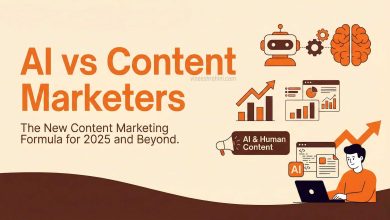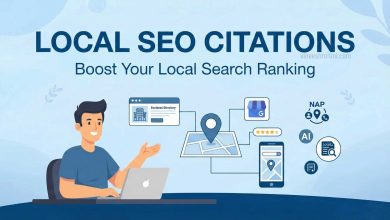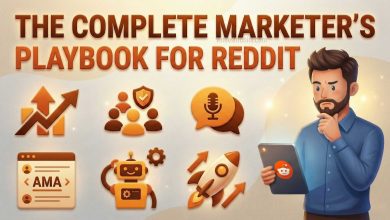Visuals vs Content: Which is More Attractive for Your Online Post or Advertisement?
Introduction
In today’s digital age, visuals and content are two of the most important components of any online post or advertisement. When we come across a post for the first time, the visuals and the content are the two elements that attract our attention. Both visuals and content play a crucial role in creating a first impression, and both have their advantages and disadvantages. In this essay, we will discuss the strengths and weaknesses of visuals and content and try to determine which is more attractive when we see a post for the first time.
Visuals
Visuals are a powerful tool for grabbing attention and making a lasting impression. When we see an image or a video, it can convey a lot of information in a very short amount of time. For example, a single image can tell a story, evoke emotions, and convey a message, all without using any words. Visuals can be used to create a mood, to communicate a message, or to illustrate a point. They can be used to highlight key features of a product or service, or to showcase the benefits of a particular offering.
Also Read…. LinkedIn Ads vs Twitter Ads
Advantages of Visuals
One of the main advantages of visuals is their ability to grab attention. In a world where people are constantly bombarded with information, visuals are a powerful tool for cutting through the noise and getting noticed. Studies have shown that posts with visuals are more likely to be shared and liked than those without visuals. This is because visuals are more memorable and engaging than text alone.
Visuals are also a great way to tell a story. Whether it’s through a series of images or a video, visuals can be used to create a narrative that resonates with the audience. They can evoke emotions, tell a story, and convey a message all at the same time.
Disadvantages of Visuals
One of the main disadvantages of visuals is that they can be expensive to create. High-quality images and videos require professional equipment, skills, and often a lot of time and effort. This can be a significant barrier for smaller businesses or individuals who don’t have the resources to create professional-level visuals.
Visuals can also be ambiguous. They can be interpreted in different ways by different people, which can lead to confusion or miscommunication. For example, an image that is intended to convey a particular emotion or message may be interpreted differently by different people.
Also Read…. YouTube Ads vs Instagram Ads
Content
Content, on the other hand, is the written or spoken words that accompany visuals. Content can take many forms, from blog posts and articles to social media captions and product descriptions. Content is a powerful tool for providing information, educating the audience, and building trust and credibility.
Advantages of Content
One of the main advantages of content is its ability to provide information. Content can be used to educate the audience about a particular topic, to explain the benefits of a product or service, or to provide valuable insights and advice. This can help to build trust and credibility with the audience, which is essential for building a loyal following.
Content is also a great way to connect with the audience on a deeper level. By using the right tone, language, and style, content can be used to engage the audience and build a relationship with them. This can lead to increased brand loyalty, higher engagement rates, and ultimately, increased sales.
Also Read…. Personalization vs Segmentation
Disadvantages of Content
One of the main disadvantages of content is its limited attention span. In today’s fast-paced world, people have shorter attention spans than ever before. This means that content needs to be concise, engaging, and to the point in order to be effective. If content is too long or too complex, it can quickly lose the attention of the audience.
Content can also be difficult to create. It requires a good understanding of the topic, strong writing skills, and often a lot of research and editing. This can be a significant barrier for individuals or businesses that don’t have the necessary skills or resources to create high-quality content.
Which is More Attractive?
When it comes to determining which is more attractive between visuals and content, there is no one-size-fits-all answer. Both visuals and content have their own unique strengths and weaknesses, and the most effective approach depends on the context and the target audience.
In some cases, visuals may be more effective at grabbing attention and conveying a message. For example, if you’re advertising a product that has a visual appeal, such as clothing or furniture, then high-quality visuals are essential for showcasing the product’s features and benefits.
On the other hand, if you’re trying to educate the audience or build trust and credibility, then content may be more effective. For example, if you’re a business that offers professional services, such as legal or financial advice, then well-written content that provides valuable insights and advice can help to build trust and credibility with your target audience.
Also Read…. Display Ads vs. Search Ads
Conclusion
In conclusion, visuals and content are both important components of any online post or advertisement. Both have their advantages and disadvantages, and the most effective approach depends on the context and the target audience. In some cases, visuals may be more effective at grabbing attention and conveying a message, while in other cases, content may be more effective at educating the audience and building trust and credibility.
Ultimately, the best approach is to use a combination of both visuals and content. By using high-quality visuals to grab attention and well-written content to educate and build trust, businesses can create a winning combination that engages the audience and drives results.



